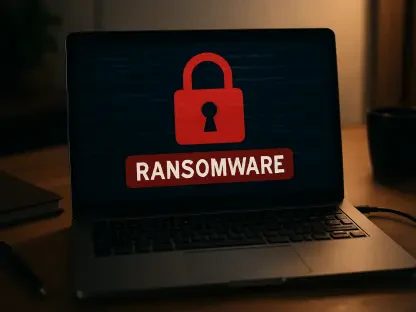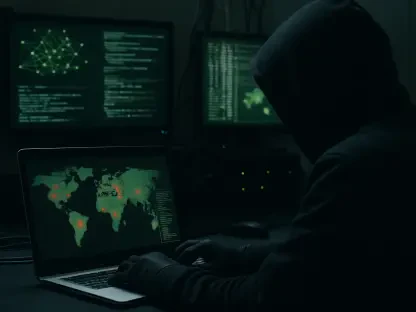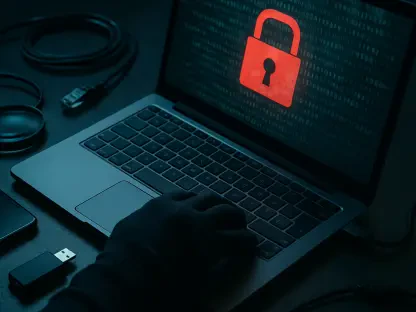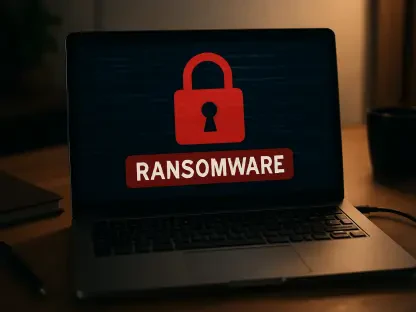In today’s digital age, cybersecurity is a critical concern for individuals and organizations alike. However, traditional methods of teaching cybersecurity often fail to engage and resonate with diverse audiences. This article explores the potential of storytelling as a powerful tool to make cybersecurity education more engaging and effective. By examining the insights of experts and real-world applications, we aim to understand how narrative techniques can enhance online safety awareness across various demographics.
The Power of Storytelling in Education
Historical Significance of Storytelling
Storytelling has been a fundamental method of communication and education throughout human history. From ancient myths to modern-day novels, stories have always been a way to convey important lessons and values. In the context of cybersecurity, storytelling can simplify complex concepts and make them more relatable to everyday experiences. Narratives have the unique ability to encapsulate intricate information within familiar contexts, bridging the gap between technical complexity and daily digital habits. This timeless method of instruction proves invaluable in molding the understanding and behavior of diverse audiences, fostering an inclusive approach to cybersecurity education.
As society rapidly evolves, the timeless practice of storytelling remains relevant, seamlessly adapting to contemporary issues such as online security. Ancient civilizations used mythological tales to impart wisdom, a practice continued by modern tools like webcomics, instructional videos, and serialized e-books targeting today’s digital citizens. These modern narratives echo ancient methodologies, ensuring that the essence of storytelling—engaging, instructive, and memorable—lives on. By harnessing the expressive power of stories, educators can present cybersecurity narratives that resonate on a personal level, leaving a lasting impression on individuals’ online behavior and awareness.
Making Cybersecurity Concepts Accessible
One of the main challenges in cybersecurity education is the complexity of the subject matter. Technical jargon and abstract concepts can be daunting for non-experts. By using stories, educators can break down these barriers and present cybersecurity principles in a more digestible format. Relatable characters and scenarios can illustrate the consequences of online actions, making the lessons more memorable. This breakdown of intricate topics through narrative means ensures that even the most complex cybersecurity issues are accessible and retainable for audiences of varying technical backgrounds.
Cybersecurity education benefits immensely from this narrative approach by focusing on the human aspects of online interactions. When cybersecurity practices are tied to the experiences of characters within a story, learners can see their actions and potential consequences reflected through these characters. This simulated yet relatable storytelling context helps demystify technical terms and highlight real-world applicability. Through engaging narratives, critical cybersecurity behaviors become second nature, seamlessly integrating into the daily lives of learners across different demographics.
Engaging Children Through Storytelling
The Adventures of Nettie and Webby
Wendy Goucher’s series “The Adventures of Nettie and Webby” is a prime example of using storytelling to teach children about online safety. Inspired by classic morality tales, these stories are set in a fictional “Cyberland” where characters face various online challenges. Through their adventures, children learn about safe online behavior and the importance of sharing their digital experiences with trusted adults. Goucher’s storytelling technique intertwines captivating plots with educational content, creating an immersive learning experience that captures both attention and imagination.
In “The Adventures of Nettie and Webby,” the narratives revolve around scenarios children may encounter in their online interactions, making the lessons directly applicable to their daily digital life. For example, characters might face phishing attempts, experience cyberbullying, or navigate privacy settings, mirroring real-life online challenges encountered by young users. By framing these issues within an engaging context, children not only understand the implications but also grasp the importance of cybersecurity practices at a fundamental level. This pioneering approach makes cybersecurity education playful yet profound, addressing both cognitive and emotional learning pathways.
Encouraging Open Communication
A key aspect of Goucher’s stories is the emphasis on open communication between children and parents. By creating a narrative that encourages children to talk about their online experiences, the stories help build a foundation of trust. This open dialogue is crucial for addressing potential risks and problems promptly, ensuring that children feel supported and informed. Developing communication skills around digital experiences equips children with the support network needed to handle online threats effectively.
Parents are an integral part of the cybersecurity equation in Goucher’s stories. They are portrayed as approachable figures, creating an environment where children feel safe discussing online incidents without fear of reprimand. This narrative not only teaches children about online safety but also transforms parents into active participants in their digital education. By fostering proactive conversations and reassuring parental involvement, the stories bridge generational gaps in understanding and promote a united front against cybersecurity threats. The result is a family culture of transparency and vigilance in the digital world, fostering resilience against online dangers.
Educating Parents Through Children’s Stories
Lessons for Parents
Joe Pettit highlights that the lessons in Goucher’s books are not just for children but also for parents. Often, parents may unintentionally discourage their children from sharing online mishaps by reacting punitively. The stories teach parents to create a safe environment where children feel comfortable reporting online incidents. This approach helps parents become more aware of cybersecurity threats and fosters a collaborative learning environment. By altering reaction dynamics, the narratives help transform homes into safe spaces for discussing online experiences, crucial for instilling effective cybersecurity awareness.
The narrative approach makes it clear to parents that punishment for online errors can backfire, leading to secrecy and increased vulnerability. Instead, the focus shifts to understanding and addressing the root causes of online missteps. Parents are encouraged to see digital misadventures as teachable moments rather than opportunities for disciplinary action. This perspective ultimately fosters open communication, enhancing trust and creating a family culture conducive to learning about and combatting online threats together.
Mutual Learning and Understanding
By engaging with their children’s stories, parents can enhance their own understanding of cybersecurity. This mutual learning process benefits both parties, as children take pride in educating their parents about new technology and online safety. It also helps bridge the generational gap in digital literacy, creating a more informed and cohesive family unit. This dynamic encourages a bidirectional flow of information, making cybersecurity an intergenerational endeavor, where both children and parents contribute and learn collaboratively.
Parents’ engagement with their children’s stories plays a critical role in updating their own cybersecurity knowledge, which may often be outdated or lacking. As children explain the online safety lessons they learn through stories, they not only reinforce their own understanding but also contextualize cybersecurity principles for their parents. This process empowers families to navigate the digital landscape together, ensuring everyone is on the same page regarding threats and protective practices. Such collaborative learning solidifies a family’s collective cybersecurity posture, making mutual vigilance and support a natural part of their daily interactions.
Empowering Older Adults with Cybersecurity Knowledge
Targeting Vulnerable Demographics
Older adults are often more susceptible to online scams and cyber threats due to a lack of familiarity with digital technologies. Wendy Goucher has addressed this issue by creating cybersecurity stories specifically for older adults. These stories, designed like mysteries, use recurring characters and engaging plots to teach essential cybersecurity principles. By wrapping cyber lessons in a mystery narrative, Goucher ensures that older adults are both entertained and educated, making the learning process enjoyable and effective.
Through these mystery-driven narratives, older adults encounter characters facing scams, phishing attacks, and other cyber threats that they might encounter in real life. The familiarity of the mystery genre, paired with relatable contexts, demystifies the complexities of cybersecurity for older readers. Engaging plots not only capture their attention but also provide practical solutions to protect themselves online. This innovative, age-appropriate approach helps bridge the digital divide for older adults, empowering them with the knowledge needed to navigate the internet safely.
Accessibility and Engagement
To ensure accessibility, Goucher’s ebooks are available on platforms like Amazon and Kindle, catering to different reading preferences and technological proficiencies. By presenting cybersecurity education in an engaging and relatable format, these stories empower older adults with the knowledge to protect themselves online. They also help reduce the stigma and shame associated with falling for scams, promoting a more positive and proactive approach to cybersecurity. This access to user-friendly platforms ensures that a broader elder demographic benefits from these educational resources.
The engaging narratives alleviate the embarrassment that older adults might feel when discussing or admitting to falling for scams. These stories present cybersecurity challenges as common issues that can happen to anyone, thus normalizing the experience and making it easier to address publicly. By framing cybersecurity lessons within an enjoyable and guilt-free learning environment, Goucher’s approach reduces the emotional barriers that often prevent older adults from seeking help or sharing their experiences. Consequently, it fosters a culture of ongoing education and support, crucial for staying protected in the ever-evolving digital landscape.
Continuous Learning for Cybersecurity Professionals
Acknowledging Vulnerabilities
Even seasoned cybersecurity professionals are not immune to online threats. Wendy Goucher and Joe Pettit emphasize the importance of continuous learning and humility within the professional community. By acknowledging their own vulnerabilities, professionals can foster a culture of growth and improvement. This realistic approach to cybersecurity acknowledges that mistakes are inevitable, regardless of expertise level, and that they offer valuable learning opportunities.
Within professional cybersecurity circles, the narrative approach serves a dual purpose: promoting humility and fostering resilience. Acknowledging the human element in cybersecurity—the possibility of error even among experts—encourages a more supportive professional environment. Recognizing vulnerability leads to openness about mistakes and a willingness to learn from them, creating a cyclical process of improvement and learning. This outlook prevents stagnation and encourages perpetual updating of skills and knowledge, crucial for keeping up with the ever-changing cyberspace landscape.
Promoting a Healthy Learning Environment
The narrative approach also encourages professionals to view mistakes as learning opportunities rather than failures. This perspective helps create a supportive and resilient professional environment, where individuals are motivated to stay vigilant and continuously update their knowledge and skills. Understanding that everyone, regardless of experience, is susceptible to cyber threats fosters a collaborative spirit aimed at collective improvement rather than individual blame.
By adopting this storytelling method within professional development contexts, cybersecurity practices are framed as evolving and adaptive rather than static. This mindset shift from punitive to instructive responses to cyber incidents significantly improves the learning culture within organizations. Professionals are motivated to share experiences and insights, leading to collective growth and more robust security measures. This shift towards a narrative-driven learning environment contributes to a more resilient and adaptable cybersecurity workforce, better equipped to handle the complexities of modern cyber threats.
The Universal Appeal of Storytelling
Bridging Demographic Gaps
One of the most significant advantages of storytelling is its universal appeal. Regardless of age or expertise level, stories can engage and educate diverse audiences. By tailoring narratives to specific demographics, educators can ensure that cybersecurity lessons are relevant and impactful for everyone. When cybersecurity concepts are woven into relatable and engaging stories, they become more accessible and memorable across all demographic divides, from young children to seasoned professionals.
Storytelling has the flexibility to address the unique needs and experiences of various demographic groups, making it an inclusive educational tool. Children can relate to adventurous tales of online safety, parents can understand their role through family-oriented narratives, older adults can enjoy mystery-themed cybersecurity lessons, and professionals can learn from real-world scenario-driven stories. This demographic-specific tailoring ensures that learning materials resonate deeply with each audience, effectively bridging gaps and fostering a collective understanding and approach to cybersecurity.
Fostering a Culture of Cybersecurity Awareness
In our digital era, cybersecurity has become a paramount concern for both individuals and organizations. Unfortunately, traditional cybersecurity training methods frequently lack the ability to captivate and connect with diverse audiences effectively. This article delves into the promising role of storytelling as a tool to enhance cybersecurity education, making it more engaging and impactful. By delving into expert opinions and practical examples, we aim to uncover how integrating narrative techniques can boost online safety awareness across a wide range of demographics. Through storytelling, complex cybersecurity concepts can be simplified, making them more relatable and memorable for different groups of people. Instead of relying solely on dry, technical jargon, weaving these critical lessons into compelling stories can spark interest and ensure that vital safety messages stick. In this discussion, we highlight the transformative potential of stories in teaching cybersecurity, aiming to make the internet a safer place for everyone by fostering a deeper understanding and awareness of online threats.









